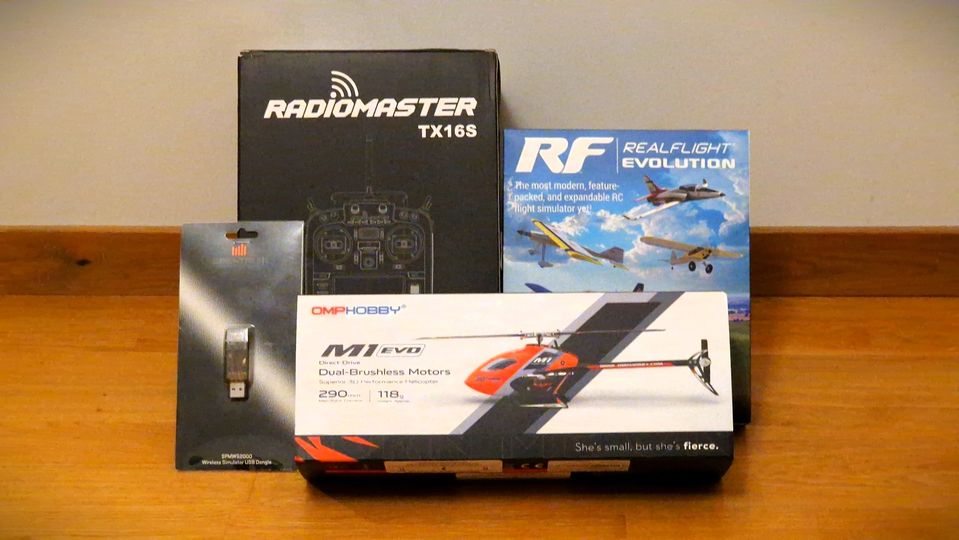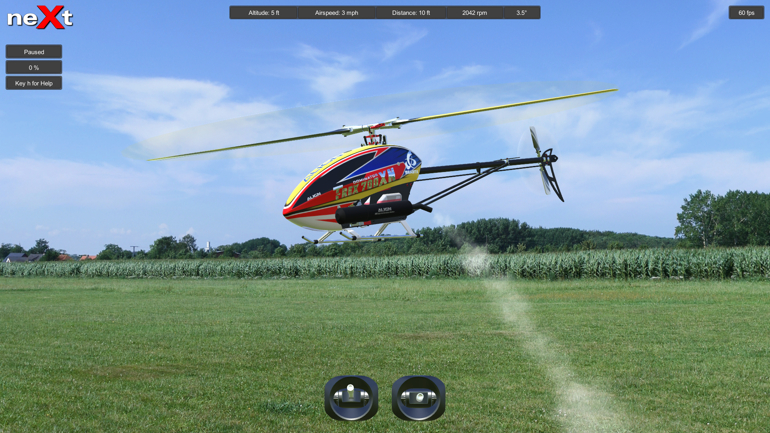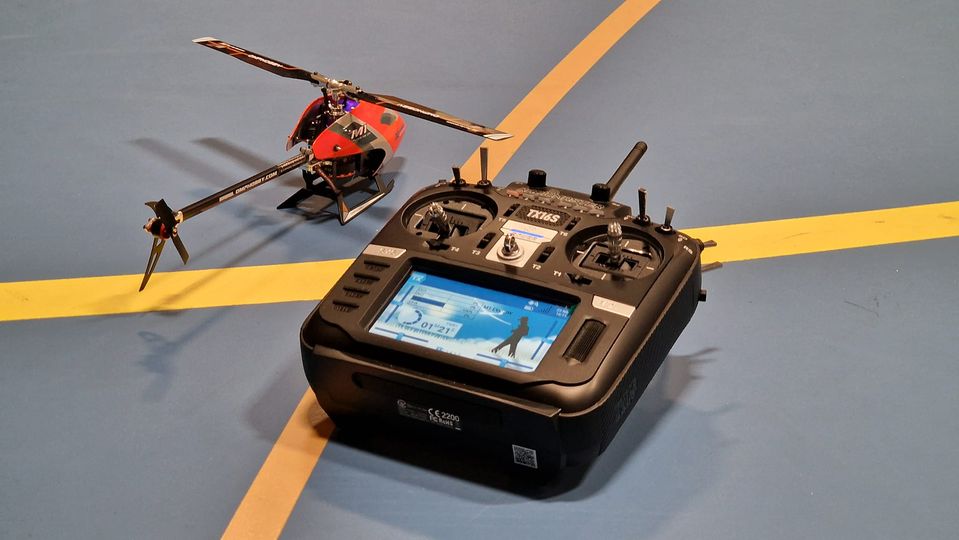What is the best way to start the hobby?


Hey there, future RC heli enthusiast! Ready to dive into the world of remote-controlled flying machines and learn the best way to kickstart your new hobby?
In this guide, we’re gonna talk about two must-do steps for beginners: getting cozy with a simulator first and snagging a budget-friendly heli like the OMP M1.
Step 1: Get a Simulator, the core of your training

A simulator is a software that emulates the physics of RC helicopters. It’s a great way to get started with the hobby because it allows you to practice flying without the risk of crashing your real heli. You can crash as many times as you want in the simulator, and you won’t have to worry about repairs or costs.
Why should I get a simulator?
- It’s the best way to learn how to fly RC helicopters.
- It’s a safe way to practice flying without the risk of crashing your real heli.
- It’s a great way to learn new maneuvers and improve your skills.
What simulator should I get?
There are many simulators out there, but we recommend Heli-X and AccuRC. Both are great simulators with realistic physics and a wide range of helicopters to choose from.
There are other simulators as Next Simulator, Phoenix, RealFlight, and more. But we recommend Heli-X and AccuRC because they are the most realistic simulators out there.
How much does a simulator cost?
Heli-X costs $99, and AccuRC costs $99.99. Both simulators are available for Windows, Mac, and Linux.
What controller should I get?
You can use any controller you want, but we recommend the Radiomaster TX16S because it’s a great controller with a lot of features and a great price. The Radiomaster Zorro is also a great option if you want a cheaper controller.
How do I connect my controller to the simulator?
You can connect your controller to the simulator using a USB cable or a wireless adapter. We recommend using a USB cable because it’s more reliable than a wireless adapter.
But if you want to use a wireless adapter, we recommend the FrSky XSR-SIM because it’s a great adapter with a great price.
How do I start flying in the simulator?
-
Setting Up Your Simulator:
Familiarize yourself with the simulator’s interface and settings.
Configure your controller or transmitter to ensure it’s properly connected to the simulator. Most simulators allow you to use popular RC transmitters.
There is plenty of information online about how to set up your controller with a simulator. You can also ask for help at the Helifreak forum or one of the facebook groups (I recommend the Rc Heli Hangout group).
-
Choose a Beginner-Friendly Aircraft:
Opt for a stable and easy-to-control aircraft for your initial flights. Inside the simulator, I recommend to select a 700 size helicopter (For example an old and classical T-Rex 700). This will give you a stable and easy-to-control aircraft for your initial flights.
-
Basic Controls:
Understand the basic controls: throttle, elevator (pitch), ailerons (roll), and rudder (yaw).
Spend time getting used to how these controls influence the movement of your virtual aircraft.
-
Practice Hovering:
Start with simple tasks like hovering in place. Use gentle movements on the controls to maintain a stable hover.
Focus on throttle control to keep your virtual heli at a consistent altitude.
-
Forward Flight and Turns:
Gradually progress to forward flight by pushing the heli gently in one direction.
Practice making turns using a combination of aileron and rudder controls.
-
Simulator Scenarios:
Explore various simulator scenarios or missions designed for beginners. These may include landing challenges, obstacle courses, or simple flights around virtual landscapes.
-
Gradual Complexity:
As you gain confidence, gradually increase the complexity of your flights. Experiment with more advanced maneuvers like figure-eights and loops.
-
Crash and Learn:
Don’t be afraid to crash in the simulator. It’s part of the learning process, and the consequences are much less severe than with a real RC heli.
-
Simulator Features:
Take advantage of simulator features like time of day settings, different weather conditions, and various flying locations to enhance your experience.
-
Consistent Practice: (This is the most important step)
Practice regularly to build muscle memory and improve your reflexes. Consistency is key to mastering the art of virtual RC flying.
Try to practice at least 30 minutes a day. If you can’t do that, try to practice at least 3 times a week. Also try to track your progress by recording your flights into a spreadsheet or a notebook. You will be surprised how much you can improve in a short period of time and you will be crashing less and less.
Guides and Tutorials
Here are some free guides and tutorials that will help you get started with some basic maneuvers instructions:
-
Pilot Proficiency Program from the RC Helicopter Richard channel.
-
From tail-in to all 8s and funnels in 6 months. is a great thread from the Helifreak forum.
-
If you know any other good guides or tutorials, please let us know in the comments below, so we can add them to this list here.
Step 2: Get a Budget-Friendly Heli

Once you’ve mastered the basics in the simulator, it’s time to get a real RC heli. But don’t go for the most expensive heli out there. Instead, opt for a budget-friendly heli like the OMP M1, another great option is the OMP M2.
Why should I get a budget-friendly heli?
- It’s a great way to get started with the hobby without breaking the bank.
- It’s a great way to learn how to repair and maintain your heli.
- It’s a great way to learn how to fly a real RC heli.
How much does a budget-friendly heli cost?
The OMP M1 costs $249.99, and the OMP M2 costs $299.99.
Keep an eye online since they are always on sale in some RC stores.
What transmitter should I get?
You can use any transmitter you want(with at least 6 channels), but we recommend the Radiomaster TX16S because it’s a great transmitter with a lot of features and a great price. The Radiomaster Zorro is also a great option if you want a cheaper transmitter.
At this point, you should already have a transmitter from the simulator, so you can use it with your real heli too. That is actually the best way to go, since you will already be familiar with your transmitter.
How do I start flying my real heli?
-
Setting Up Your Heli:
Familiarize yourself with your heli’s manual and settings.
-
Space:
Find a large open space to fly your heli. Avoid flying near trees, buildings, or other obstacles.
-
Pre-Flight Check:
Perform a pre-flight check to ensure your heli is in good condition. Check the battery, blades, and other components for any signs of damage or wear.
-
Takeoff:
Take off gently and hover in place for a few seconds to get a feel for the controls.
-
Basic Controls:
Practice basic controls like throttle, elevator (pitch), ailerons (roll), and rudder (yaw).
-
Don’t Panic:
Don’t panic if you lose control of your heli. Just reduce the throttle and let it land(or crash) gently.
Crashing is part of the learning process, and because you are flying a budget-friendly heli, the consequences are much less severe than with an expensive heli.
-
Crash, Fix and Learn:
Fix your heli and learn from your mistakes. This will help you become a better pilot.
Crashing is also an opportunity to learn how to repair and maintain your heli.
Avoid doing crazy maneuvers until you are confident in your skills. Try to reproduce the maneuvers you learned in the simulator.
-
Consistent Practice: (This is the most important step)
Practice regularly to build muscle memory and improve your reflexes. Consistency is key to mastering the art of RC flying.
Conclusion
The best way to start the hobby is to get a simulator and a budget-friendly heli. This will allow you to learn how to fly without breaking the bank.
Whether in virtual loops or real-world turns, enjoy the process, learn from the crashes, and become the RC helicopter pro you’re meant to be. Happy flying! 🌟🚁
Mastering the Hobby:
Start your RC helicopter journey with a simulator and a budget-friendly heli for an affordable and skill-building takeoff.
Virtual to Reality:
Simulators like Heli-X and AccuRC offer a risk-free playground for learning maneuvers and honing skills. Transition to the OMP M1 for real thrills without breaking the bank.
Budget-Friendly Adventures:
Explore the affordable joy of the OMP M1 and OMP M2. Learn, repair, and maintain your heli without compromising on the excitement.
Consistency is Key:
Daily dedication in the simulator or with your heli is your path to becoming an RC helicopter maestro. Embrace crashes, fix and learn, and watch your skills soar.
Photo credits
- Thanks to Jani Timonsson for the photos.